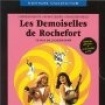Le bonheur
| 片名: | Le bonheur |
|---|---|
| 其它片名: | 幸福/Happiness |
| 导演: | Agnès Varda |
| 编剧: | Agnès Varda |
| 制片人: | Mag Bodard |
| 摄影: | Jean Rabier, Claude Beausoleil |
| 美术: | Joseph Gerhard |
| 剪辑: | Janine Verneau |
| 主演: | Jean-Claude Drouot, Claire Drouot, Olivier Drouot |
| 音乐: | Jean-Michel Defaye |
| 片长: | 79分钟 |
| 年份: | 1965年 |
| 类型: | |
| 国别: | 法国 |
| 语言: | 法语 |
| 格式: | |
| 制作机构: | Parc Film |
影片概述 . . . . . .
一群客观来说尚称快乐,而凡事却总得再述一遍的人,匪夷所思的是,对他们来说尚称快乐是可以替换的。一个男人和一个女人以及两个孩子在一起,他们始终觉得一切美好,然后女人自杀了,接着他续了弦,一切就这样继续下去,因为这背后已经不存在感觉了。
Though married to the good-natured, beautiful Thérèse (Claire Drouot), young husband and father François (Jean-Claude Drouot) finds himself falling unquestioningly into an affair with an attractive postal worker. One of Agnès Varda’s most provocative films, Le bonheur examines, with a deceptively cheery palette and the spirited strains of Mozart, the ideas of fidelity and happiness in a modern, self-centered world.
Forty years ago I saw this movie three times. Triangel love affairs are the subject of many movies, but I've never seen it more beautifully done then in this movie.
I was especially impressed by the use of the music by Wolfgang Amadeus Mozart.
It is the Serenade for Winds in C minor (K. 388) written in 1782. This Serenade for Winds was transcribed by Mozart to the String Quintet in C minor (K. 406). One version is used for the first relationship, the other version for the second relationship. In this way they represent 'le Bonheur' (the Happinesss) in both relationships and the whole movie.
Though married to the good-natured, beautiful Thérèse (Claire Drouot), young husband and father François (Jean-Claude Drouot) finds himself falling unquestioningly into an affair with an attractive postal worker. One of Agnès Varda’s most provocative films, Le bonheur examines, with a deceptively cheery palette and the spirited strains of Mozart, the ideas of fidelity and happiness in a modern, self-centered world.
Forty years ago I saw this movie three times. Triangel love affairs are the subject of many movies, but I've never seen it more beautifully done then in this movie.
I was especially impressed by the use of the music by Wolfgang Amadeus Mozart.
It is the Serenade for Winds in C minor (K. 388) written in 1782. This Serenade for Winds was transcribed by Mozart to the String Quintet in C minor (K. 406). One version is used for the first relationship, the other version for the second relationship. In this way they represent 'le Bonheur' (the Happinesss) in both relationships and the whole movie.
导演阐述 . . . . . .
获得奖项 . . . . . .
评论列表(0) . . . . . . ( 发表新评论 ) ( 更多评论 )
幕后花絮 . . . . . . (上传花絮) (展开所有)
影片图集 . . . . . . (更多/我要上传)
相关视频 . . . . . . (更多/我要分享)
对本影片资料作出贡献的会员 . . . . . .
4444(创建者)



















































